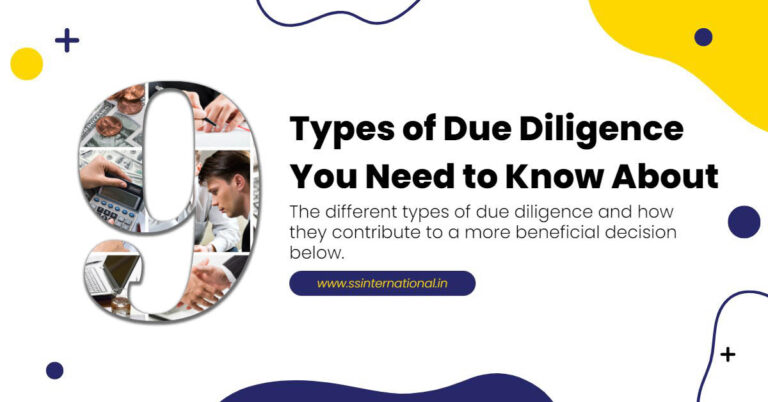
In today’s rapidly evolving digital landscape, emerging technologies have become a driving force behind innovation and progress. Technologies such as artificial intelligence (AI), blockchain, and 3D printing are reshaping industries and transforming the way we live and work. However, along with their numerous benefits, these technologies also raise critical questions regarding intellectual property (IP) rights and ownership.
Understanding Emerging Technologies
Artificial Intelligence
One of the most significant emerging technologies is artificial intelligence (AI). AI systems have the potential to produce original works of literature, art, and music, revolutionizing industries ranging from healthcare and finance to production and leisure. However, the question of IP rights arises when AI systems generate original works. Who owns the IP rights? Should it be the AI system, the human programmer, or the organization that owns the AI system? Clarifying these concerns is essential to determine the future of AI-generated works and ensure fair compensation for creators.
Blockchain Technology
Blockchain technology, known for its decentralized and transparent nature, has significant implications for intellectual property rights. It can provide unchangeable ownership records, making the management of IP assets safer and more effective. Blockchain-based smart contracts can automatically enforce IP rights, allowing creators to secure their work and receive royalties without intermediaries. However, implementing blockchain in the intellectual property domain raises legal considerations such as privacy, jurisdiction, and compatibility with existing laws and regulations.
3D Printing
3D printing, also known as additive manufacturing, allows the creation of three-dimensional objects from digital designs. This technology disrupts traditional production and distribution models, enabling individuals to create replicas of existing patented goods. However, this raises concerns about infringement and counterfeiting, as people can easily reproduce patented products. Addressing this challenge requires a careful balance between protecting the rights of patent holders and fostering innovation through the development of licensing models and enhanced tracking and enforcement systems.
Implications for Intellectual Property Rights
Artificial Intelligence and IPR
The development of AI has a significant impact on existing intellectual property rights frameworks. Existing IP laws have a human-centered nature, which raises questions about the ownership of AI-generated works. Should the user of the AI system, the inventor of the AI system, or the AI system itself be granted the rights? The inclusion of AI within the scope of existing IP laws, such as patent and copyright acts, needs to be reevaluated and redefined to ensure fair and appropriate protection for AI-generated works.
Here are some relevant case studies and real-life examples of the impact of AI on intellectual property rights:
Case study 1: The Next Rembrandt
In 2016, a group of Dutch researchers unveiled a new work of art called The Next Rembrandt, which was created by a computer algorithm trained on thousands of paintings by the Dutch master Rembrandt Harmenszoon van Rijn. The algorithm was able to generate a new painting that was indistinguishable from a real Rembrandt to many experts.
The Next Rembrandt raised a number of legal questions about the ownership of AI-generated works. Who owns the copyright to the painting? Is it the researchers who created the algorithm, the company that funded the project, or the AI algorithm itself?
Case study 2: Getty Images v. Stable Diffusion
In 2023, Getty Images filed a lawsuit against the creators of Stable Diffusion, a text-to-image AI system, alleging that the system infringed on Getty’s copyright by using unlicensed images in its training dataset. Getty also alleged that Stable Diffusion’s output was too similar to Getty’s copyrighted images, even when the system was not directly copying them.
The Stable Diffusion case is still ongoing, but it has raised important questions about the copyright implications of using AI to generate new works. Can AI systems be held liable for copyright infringement? And if so, who is responsible for ensuring that AI systems do not infringe on copyrights?
Case study 3: The AI-generated novel
In 2016, a Japanese computer program called the GPT-2 generated a short novel called The Day a Computer Wrote a Novel. The novel was submitted to a national literary prize and made it to the second round.
The GPT-2 novel raised the question of whether AI-generated works can be considered “creative” in the same way as human-generated works. If so, then AI systems could potentially be granted copyright protection for their works. However, if AI systems are not considered to be creative, then their works could potentially be copied without permission.
Blockchain Technology and IPR
Blockchain technology has the potential to revolutionize the management and protection of intellectual property assets. By providing transparent and tamper-proof records of ownership, blockchain can enhance transparency, reduce infringement, and facilitate fair compensation for creators. However, the implementation of blockchain in the intellectual property domain requires careful consideration of legal aspects such as privacy, jurisdiction, and compatibility with existing laws and regulations. Adapting the legal framework to accommodate blockchain technology can harness its potential while safeguarding intellectual property rights.
The implementation of blockchain in the intellectual property domain raises a number of legal considerations, such as:
- Privacy: Blockchain is a public ledger, which means that all transactions are recorded and visible to anyone. This could raise privacy concerns for creators who do not want their IP ownership information to be publicly available.
- Jurisdiction: Blockchain is a decentralized technology, which means that it is not subject to the jurisdiction of any one country. This could make it difficult to enforce IP rights through blockchain-based systems.
- Compatibility with existing laws and regulations: Existing IP laws and regulations were not written with blockchain in mind. This could lead to compatibility issues when implementing blockchain in the intellectual property domain.
3D Printing and IPR
The advent of 3D printing poses challenges to traditional intellectual property rights. This technology enables individuals to create physical objects from digital designs, raising concerns about the infringement of copyrighted works and the reproduction of patented products. Protecting patented designs from unauthorized duplication becomes more challenging as people can easily replicate and distribute 3D-printed objects. Addressing these challenges requires the development of specific legislation to address trademark violations caused by 3D printing and the protection of patented designs.
The challenges posed by 3D printing to intellectual property rights are complex and there is no easy solution. However, there are a number of things that can be done to address these challenges:
- Develop new laws and regulations: New laws and regulations are needed to specifically address the challenges posed by 3D printing to intellectual property rights. These laws and regulations should be designed to protect the rights of IP holders while also encouraging innovation and creativity.
- Educate the public: It is important to educate the public about the intellectual property implications of 3D printing. This will help to reduce the number of accidental copyright and patent infringements.
- Develop technical solutions: Technological solutions can also be developed to help protect intellectual property rights in the age of 3D printing. For example, digital watermarks can be embedded into 3D-printable designs to make it easier to track down and prosecute counterfeiters.
Awareness and Education
Managing the complexity of intellectual property rights in the face of emerging technologies requires awareness and education. It is crucial for technology creators, inventors, and users to have a comprehensive understanding of their IP rights and responsibilities. Educational programs, training initiatives, and public awareness campaigns can promote compliance and foster a culture that appreciates and respects intellectual property. By promoting education and awareness, individuals and businesses can navigate the intellectual property landscape effectively.
Continuous Adaptation of IP Laws
To keep pace with emerging technologies, intellectual property laws need to continuously adapt and evolve. Policymakers and legal experts must be involved in ongoing discussions and evaluations to identify gaps and address the challenges posed by new technologies. Flexibility in IP frameworks can encourage innovation, provide clarity for creators and users, and protect against intellectual property infringements. By remaining vigilant and responsive, lawmakers can ensure that the promotion of innovation, creativity, and the protection of intellectual property rights are mutually compatible.
Conclusion
The impact of digital and emerging technologies on intellectual property rights is undeniable. While these technologies bring numerous benefits and opportunities, they also raise critical questions and challenges regarding IP protection. Adapting current IP frameworks, developing new laws and regulations, and fostering an environment that rewards and protects creators are crucial steps in ensuring fair compensation and encouraging innovation. As the digital landscape continues to evolve, it is essential for policymakers, legal experts, and technology stakeholders to work together to strike the right balance between promoting innovation and protecting intellectual property rights.



